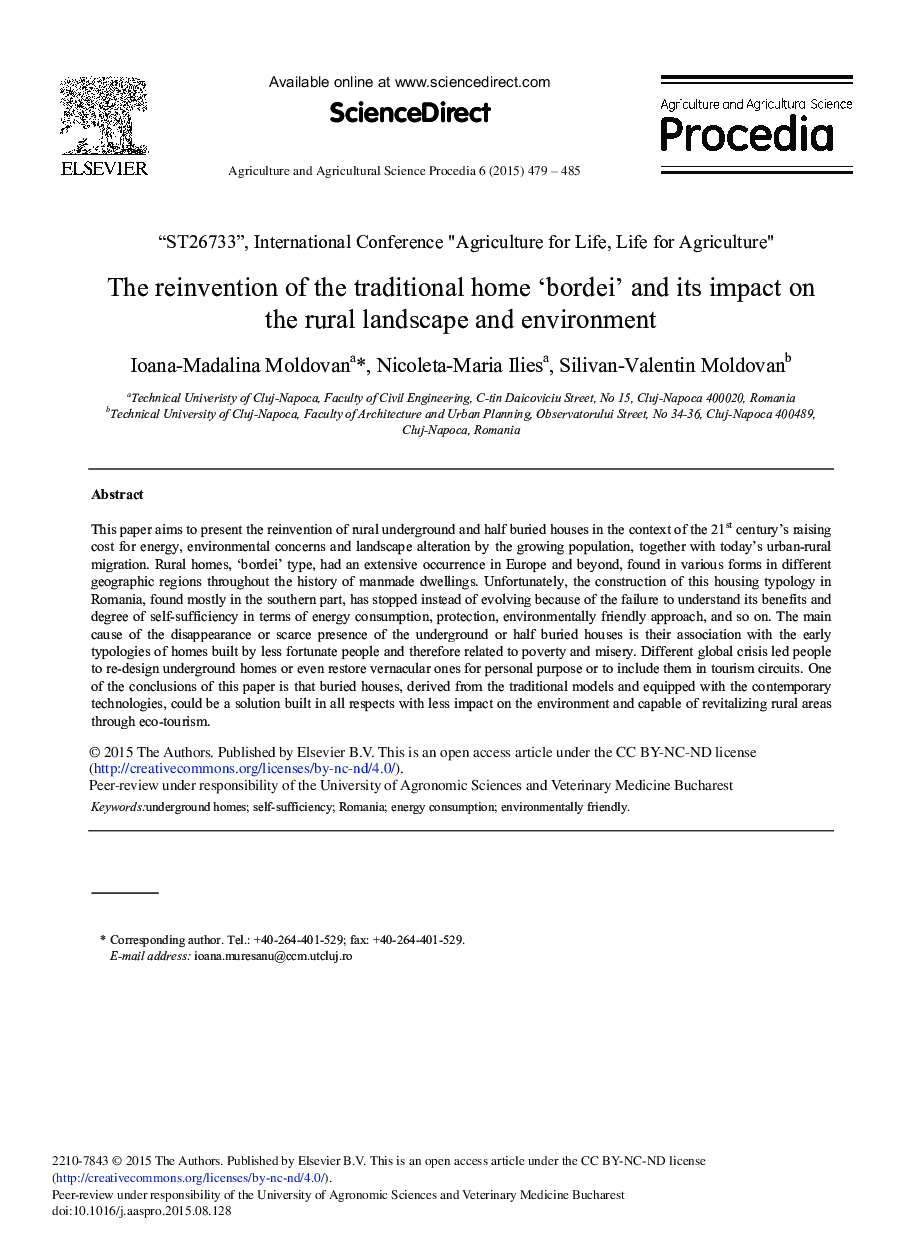| کد مقاله | کد نشریه | سال انتشار | مقاله انگلیسی | نسخه تمام متن |
|---|---|---|---|---|
| 4492470 | 1623288 | 2015 | 7 صفحه PDF | دانلود رایگان |

This paper aims to present the reinvention of rural underground and half buried houses in the context of the 21st century's raising cost for energy, environmental concerns and landscape alteration by the growing population, together with today's urban-rural migration. Rural homes, ‘bordei’ type, had an extensive occurrence in Europe and beyond, found in various forms in different geographic regions throughout the history of manmade dwellings. Unfortunately, the construction of this housing typology in Romania, found mostly in the southern part, has stopped instead of evolving because of the failure to understand its benefits and degree of self-sufficiency in terms of energy consumption, protection, environmentally friendly approach, and so on. The main cause of the disappearance or scarce presence of the underground or half buried houses is their association with the early typologies of homes built by less fortunate people and therefore related to poverty and misery. Different global crisis led people to re-design underground homes or even restore vernacular ones for personal purpose or to include them in tourism circuits. One of the conclusions of this paper is that buried houses, derived from the traditional models and equipped with the contemporary technologies, could be a solution built in all respects with less impact on the environment and capable of revitalizing rural areas through eco-tourism.
Journal: Agriculture and Agricultural Science Procedia - Volume 6, 2015, Pages 479-485